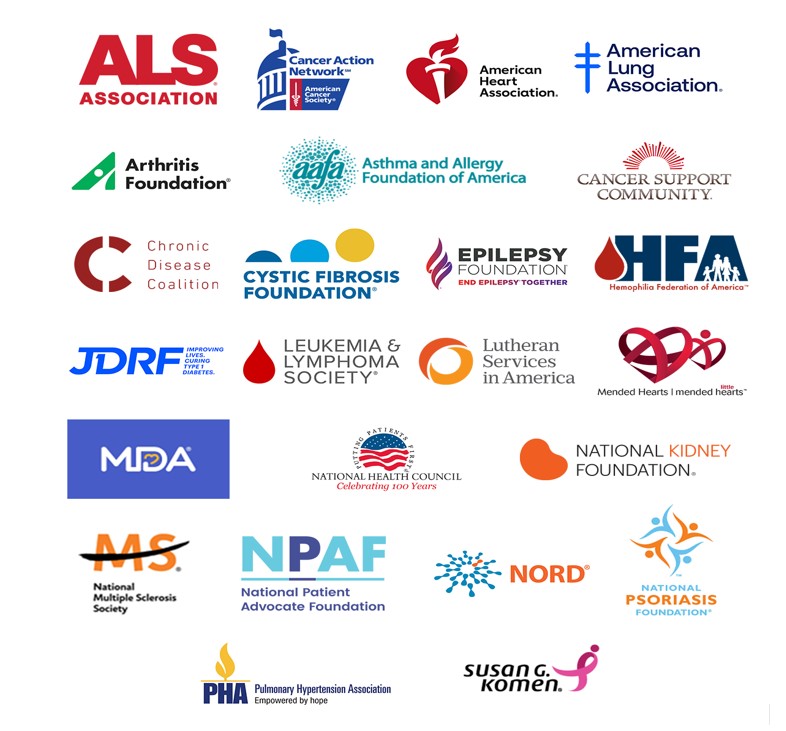WASHINGTON, D.C. | September 24, 2020
A coalition of organizations representing millions of patients who live with serious, acute, and chronic conditions has released principles to guide policymakers seeking to ensure patients can continue to safely access appropriate telehealth services during and after the COVID-19 public health emergency.
Telehealth has long been an important care delivery method for improving access in underserved and rural communities, which often face physician shortages, and areas with limited access to primary care services. However, the COVID-19 pandemic has highlighted the critical role telehealth can play in helping all patients continue to receive timely and safe health care services and treatments from their providers.
At the start of the COVID-19 pandemic, federal and state agencies provided new, and in some cases time-limited, flexibilities to increase access to telehealth. This has allowed millions of patients to access necessary health care services from the comfort and safety of their homes, driving an exponential increase in telehealth utilization. The coalition believes telehealth can and should be used to increase patient access to care. To permanently integrate it into the US health care system and ensure its integration drives the best care possible, new legislation and regulation will be necessary.
To ensure access, enable high quality care, promote equity, and protect patients, the coalition believes legislation or regulations concerning telehealth should meet the following principles:
- Improving Access through Equitable Coverage: Telehealth services should be covered by all health plans including, but not limited to, Medicare, Medicaid, the ACA Marketplace, and other federal and state regulated commercial health plans.
- Improving Access through Easing Technology Barriers: Telehealth services should be equitably available through easily usable technologies that are accessible to people with disabilities, with limited English proficiency, and limited technology. The option of audio-only communication is especially important for rural and low-income populations, as many of these patients lack internet access.
- Preserving and Promoting Patient Choice: A patient should have the opportunity and flexibility to choose whether they will access care in-person or via telehealth technologies.
- Removing Geographic Restrictions: Geographic restrictions place a burden on and can limit both patients and providers when evaluating treatment options for optimal care and should be removed.
- Protecting Patients and Provider Legal Rights: Health plans should clearly define what telehealth services are covered; providers must use technology compliant with patient privacy, disability access, and civil rights law. This information should be transparent and easy to understand for consumers.
- Increasing the Evidence Base for Telehealth: As telehealth becomes more common, data must be collected and more research must be conducted on the usage and outcomes of telehealth, with special attention to promoting health equity in order to determine how telehealth technologies should be designed and implemented so that all populations have equal access to their potential benefits.
This press release was sent on behalf of the following organizations:
To read the telehealth principles in their entirety, click here.
###
The American Lung Association is the leading organization working to save lives by improving lung health and preventing lung disease through education, advocacy and research. The work of the American Lung Association is focused on four strategic imperatives: to defeat lung cancer; to champion clean air for all; to improve the quality of life for those with lung disease and their families; and to create a tobacco-free future. For more information about the American Lung Association, which has a 4-star rating from Charity Navigator and is a Platinum-Level GuideStar Member, call 1-800-LUNGUSA (1-800-586-4872) or visit: Lung.org. To support the work of the American Lung Association, find a local event at Lung.org/events.
For more information, contact:
Allison MacMunn
312-801-7628
[email protected]
A Breath of Fresh Air in Your Inbox
Join over 700,000 people who receive the latest news about lung health, including research, lung disease, air quality, quitting tobacco, inspiring stories and more!
Thank You!
You will now receive email updates from the American Lung Association.


